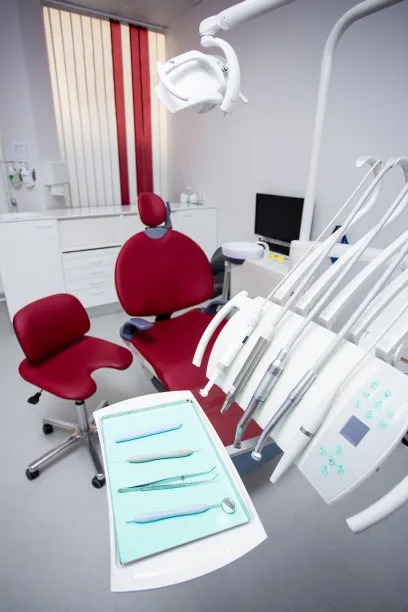Choosing the Right Time and Method to Extract a Tooth for Optimal Dental Health and Recovery
Summary: Choosing the right time and method for tooth extraction is essential for maintaining optimal dental health and ensuring a speedy recovery. This article delves into various factors influencing the timing of an extraction, the available techniques employed, the significance of post-extraction care, and the role of individual patient circumstances. By understanding these components, patients can make informed decisions that promote improved oral health and minimize discomfort. Furthermore, the piece highlights the importance of consulting with dental professionals to tailor the extraction process to the patients specific needs. Ultimately, an informed approach to tooth extraction can lead to better health outcomes and a more efficient recovery process.
1. Understanding the Appropriate Timing for Extraction

Determining the best time to extract a tooth is crucial for both the patients health and the overall success of the procedure. Factors such as the severity of decay, the presence of infection, or orthodontic concerns all play significant roles. For instance, if a tooth is severely decayed and leading to pain or infection, delaying extraction may worsen the situation, necessitating more complex treatment. Its essential for patients to communicate their symptoms and concerns effectively to their dental providers to achieve timely interventions.
Another important consideration is the age and dental maturity of the patient. For example, in young children, it might be beneficial to time extractions to coincide with the natural shedding of primary teeth. This approach can help prevent complications and might encourage the proper alignment of permanent teeth. Conducting tooth extractions too early or too late can lead to overcrowding or misalignment issues that may require orthodontic treatment later on.
Moreover, pre-existing health conditions must also be evaluated include diabetes, heart disease, or bleeding disorders, which could complicate the extraction process. In these cases, dental professionals may recommend waiting for stabilization or treatment of the underlying issue before proceeding, thus ensuring maximum safety and effectiveness during the extraction.
2. Exploring Extraction Techniques and Methods
The choice of extraction technique is another critical component affecting recovery and overall dental health. Dental professionals can choose between simple extractions and surgical extractions based upon the specific circumstances of the tooth in question. Simple extractions, typically performed when a tooth is visible and accessible, are generally less invasive and associated with quicker recovery times.
Surgical extractions come into play when teeth are impacted or have not fully erupted. This procedure is more complex and may require anesthesia, and, depending on the tooth type and location, often results in a longer recovery period. Understanding these differences enables patients to mentally prepare for their procedure and manage expectations regarding discomfort and downtime.
Ultimately, the extraction technique chosen should take into account the patients comfort level, pain threshold, and preference. Clear communication between the dentist and patient is essential in determining the most suitable approach. Additionally, advancements in dental technology, such as laser extractions, have emerged as gentle alternatives that can reduce trauma to the surrounding tissue, further enhancing recovery.
3. Importance of Post-Extraction Care
Post-extraction care plays a pivotal role in the recovery process. Following a tooth extraction, patients are typically provided with detailed instructions to minimize complications and promote healing. These may include guidelines on managing swelling and pain, as well as dietary restrictions during the initial healing period. Adhering to these recommendations is crucial for preventing complications such as dry socket, which can occur when the blood clot at the extraction site dislodges, leading to pain and infection.
Moreover, maintaining proper oral hygiene is important but should be approached with caution. Patients are usually advised to avoid rinsing vigorously or using straws in the first few days after the procedure to prevent dislodging the clot. Instead, gentle rinsing with saltwater can assist in keeping the site clean without disturbing healing tissues.
Finally, follow-up appointments should not be overlooked. These visits allow dental professionals to monitor the healing process and address any concerns the patient may have. Regular assessments can help determine when normal eating and oral hygiene habits can safely resume, ensuring a smoother journey back to optimal oral health.
4. Tailoring Extraction Choices for Individual Needs
Every patients dental health journey is unique, and recognizing individual needs when planning a tooth extraction is invaluable. Factors such as age, medical history, and dental anxiety should all influence the extraction plan. Dentists can work with patients to create customized treatment options that suit their specific circumstances and boost their comfort level.
Patients with anxiety or fear of dental procedures may benefit from sedation dentistry, which can help alleviate stress and facilitate a smooth extraction process. Additionally, if a patient has a strong gag reflex, a dentist may consider alternative positioning during the procedure to enhance comfort.
In instances where multiple extractions are needed, a comprehensive plan should be established to address the best sequencing and timing for each procedure. Tailoring the process in this way can help reduce recovery time and minimize discomfort, ensuring that patients maintain their dental health with minimal disruption.
Summary:
Choosing the right time and method for tooth extraction is essential for optimal dental health and recovery, considering various factors from timing and technique to postoperative care and individual patient circumstances. Enhancing understanding in these areas allows for informed decisions that promote better health outcomes.
Consult with your dental professional to determine the best approach tailored to your unique needs. Stay proactive in your dental care for a healthier smile!
This article is compiled by Vickong Dental and the content is for reference only


